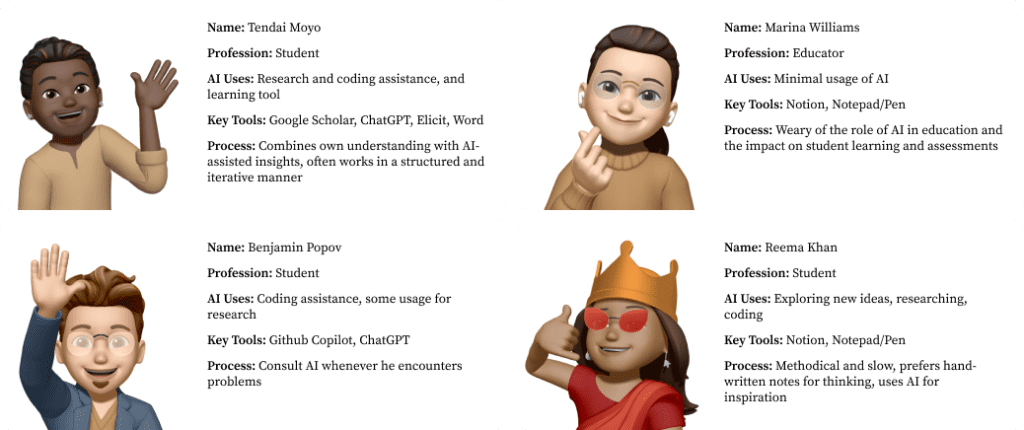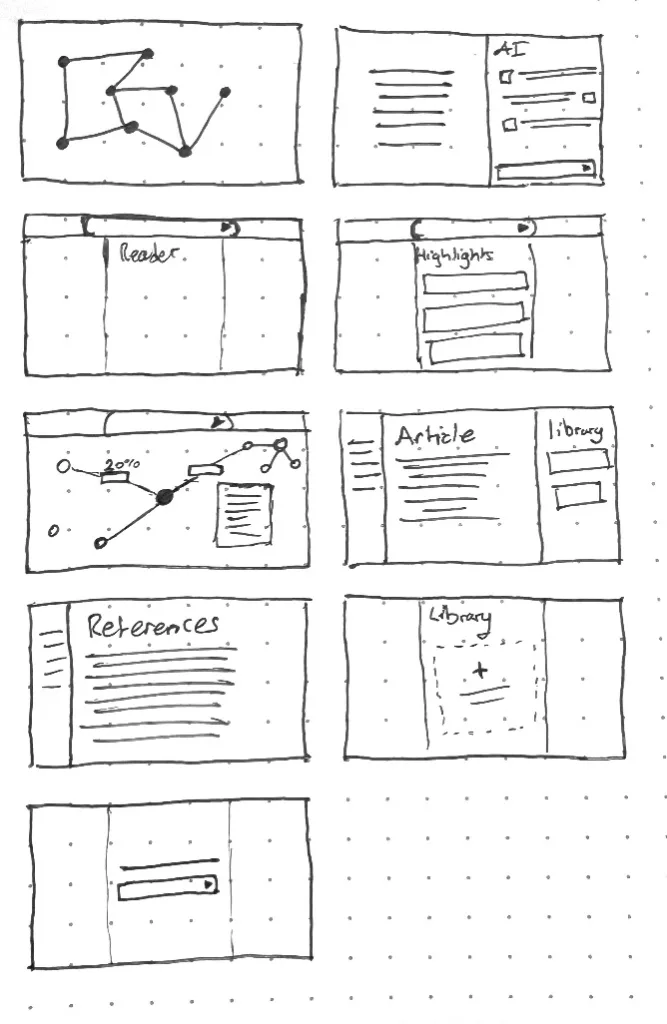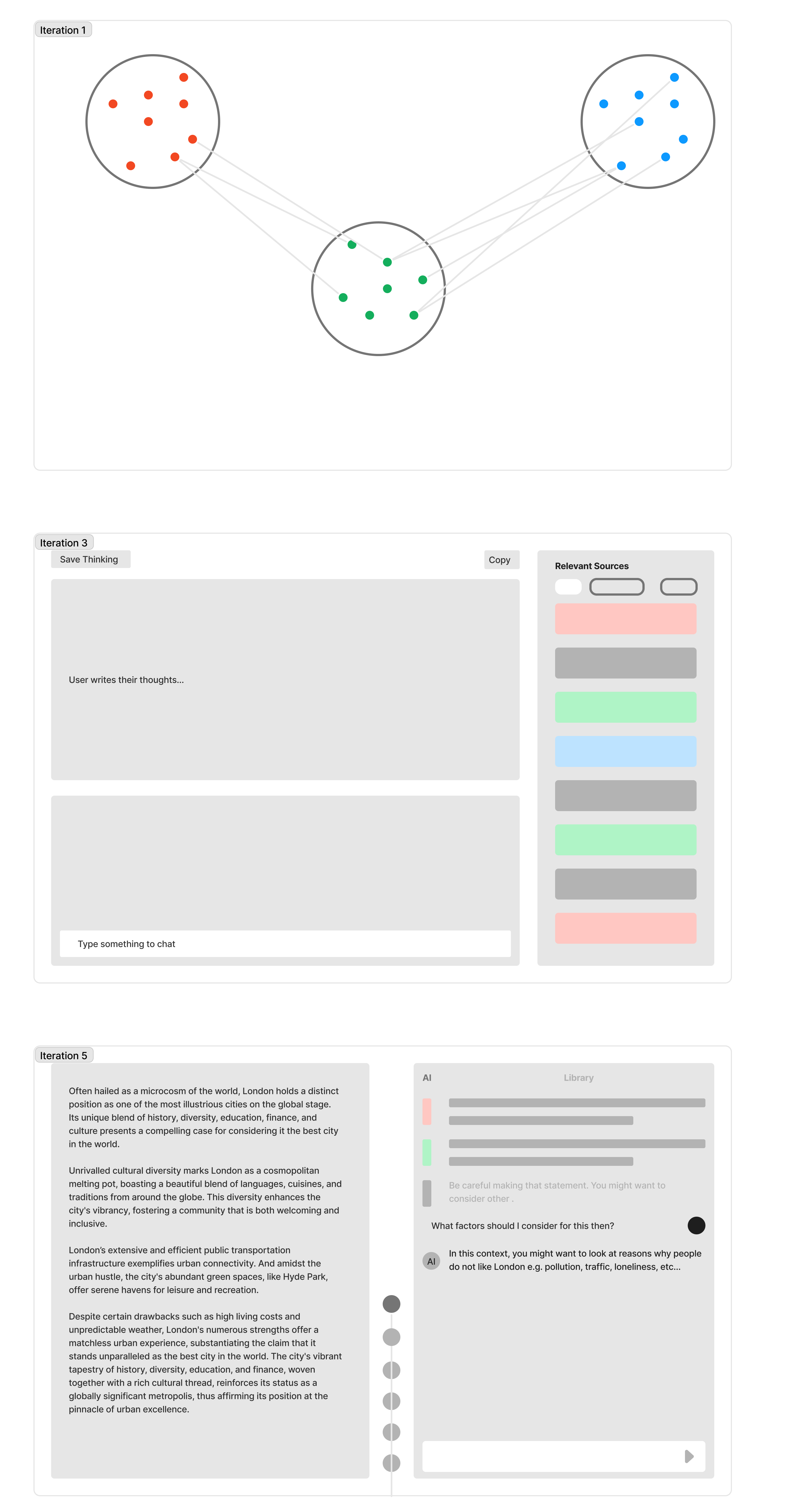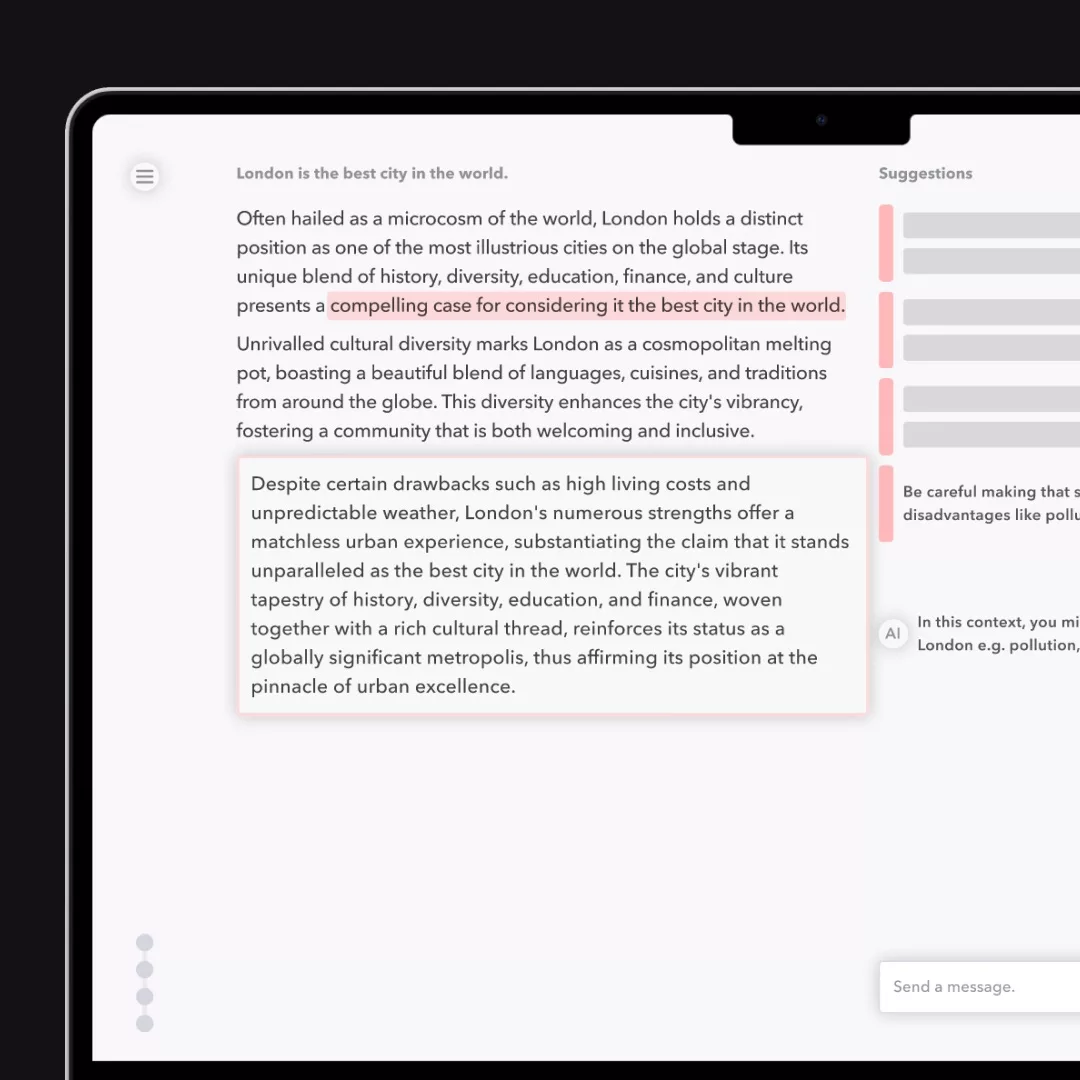Type: Solo Project @ LIS
Role: Researcher, Designer (UI/UX, Product)
Overview
With the various advancements and worldwide adoption of generative AI tools, I wondered how this would affect those in education.
So for my second-year final term project, I devised a research question investigating the opportunities generative AI presented for personalised learning.
Research Question
How can AI-powered systems such as ChatGPT provide opportunities for personalised learning within education?
Key Findings
- Educators are concerned about the authenticity of student work for non-exam assessment forms.
- The primary motivator for students using AI are the time-saving benefits.
- Students interviewed did not use AI for writing, but instead used it for research and coding assistance.
- There were differences in communication styles with ChatGPT.
- A distinction between apps that are ‘tools’ and apps that are ‘environments’.
Process
This project aimed to use design thinking as the primary qualitative method and experimental methods as a quantitative method in the testing phase. However, due to time constraints, the solution could not be tested.
Interviews
Using principles from the MOM Test by Rob Fitzpatrick, I interviewed students and educators to understand general sentiment and usage of AI.
These interviews always followed a semi-structured format containing:
- some open-ended questions designed to expose user behaviours, motivations, and general sentiments.
- some scenario-based questions aimed at uncovering user workflows, tools, and recommendations.
User Personas
Using insights from the interviews, I devised personas for two stakeholders representing educators and students.

Insights
- If AI can generate incredibly convincing bodies of text, educators can no longer use essays as a suitable proxy to test whether students can think critically.
- Students interviewed used AI to find initial reading material when researching, building foundational code, or debugging existing code.
- Some students communicated with AI in a conversational way (much like texting a friend), interrogating the AI’s answers. In comparison, others drafted a single message and worked with one/two answers that the AI provided. Those communicating conversationally seemed to extract more value from using AI.
- Students would use some apps as tools for a singular purpose/function (e.g. ChatGPT, Elicit) and others as environments to assimilate their ideas and work in (e.g. Notion, Grammarly).
“When you use the help of something like an AI, which has access to the world’s information, you are undermining your own critical thinking skills”
A student on why they are not using AI to write their essays.
Define Stage
Target User: Student Researchers
The first decision was whether to design an AI tool to support students in researching or coding. I decided against student coders for two reasons.
- Based on the interviews, students mostly coded for data science purposes, so they were more concerned with the data insights than the code itself.
- Coding solutions are a highly competitive market. Titanic organisations such as Microsoft possess a disproportionate advantage with their ecosystem of technologies owning both GitHub and Visual Studio Code and being a major investor in Open AI (the company behind ChatGPT).
Crafting a Problem Statement
At this stage, I gathered and analysed enough information to narrow my focus. My initial research question became too broad to continue this project. Based on information from the research, I devised a problem statement:
How can AI-enabled environments be used to promote critical thinking?
Wireframes


